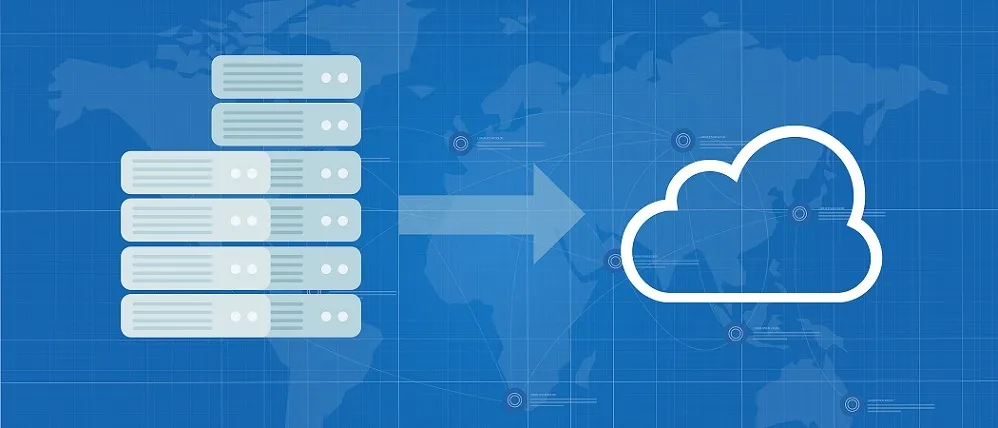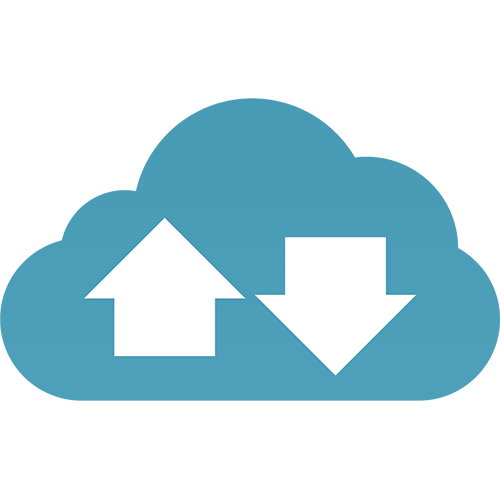What Is Organizational Network Analysis? And How Does It Benefit Companies?
What Is Organizational Network Analysis? And How Does It Benefit Companies?
Organizational Network Analysis (ONA) is a method for understanding a company's internal relationships and communication patterns, which can improve overall performance.
Have you ever wondered how companies can make the most of their resources? Organizational Network Analysis (ONA) is a powerful tool that can help businesses do just that. It can provide invaluable insights into how an organization functions, and help businesses identify potential areas of improvement. In this article, we'll take a look at what ONA is, and explain why it's so beneficial to companies.
Organizational Network Analysis is a type of data analysis that focuses on understanding the structure and dynamics of social networks within organizations. It helps identify relationships between individuals, departments, or even entire divisions. By analyzing these connections and interactions between different parts of the organization, businesses are able to gain valuable insight into how their company works and where improvements need to be made.
Using ONA gives companies an edge in today's competitive business landscape. It allows them to make smarter decisions about how they manage their resources, optimize their workflow processes, and even develop more effective strategies for customer engagement. With ONA, businesses can get a better understanding of their organizational structures and use this knowledge to build stronger teams and create successful outcomes for all stakeholders involved.

What Is Organizational Network Analysis (ONA)?
Organizational Network Analysis (ONA) is a data-driven approach to understanding the structure and dynamics of organizations. It looks at the relationships between people and groups within a company, and how those connections influence organizational functioning. ONA can help companies identify patterns of behavior and communication, understand their organizational culture, spot areas of weaknesses or opportunities for improvement, and create more effective strategies.
The first step in ONA is to identify the key players in the organization. This includes not only employees but also external individuals and entities that form part of the company’s network. Once these people have been identified, ONA then looks at the relationships between them. This could include anything from formal partnerships to informal connections such as friendships or shared interests. By examining these links, it can reveal important insights about how an organization works internally as well as its external environment.
ONA can be used to measure aspects like team collaboration, decision-making processes, leadership styles, power structures, communication networks, and more. By having this information available to them, companies can make more informed decisions about their operations and strategy. Additionally, ONA can help identify potential risks or opportunities that might otherwise go unnoticed by traditional organizational analysis methods.
Organizational Network Analysis is an invaluable tool for any company looking to gain better insight into its inner workings or uncover new opportunities for growth. It offers unique insights that no other method can provide - insights that are essential for any business looking to stay ahead of the competition in today’s ever-changing marketplace.
What Are The Components Of ONA?
Organizational Network Analysis (ONA) is a powerful tool for understanding the relationships between individuals in an organization. It consists of three main components – visualization, measurement, and analysis. In this section, let's take a closer look at each one. Visualization is an important part of ONA. It helps to make sense of complex data by displaying it visually in a way that can be easily understood by all stakeholders. Visuals such as flowcharts or diagrams can give everyone a clear picture of how different elements are connected and how they interact with one another.
Measuring the relationships between individuals within an organization is also an integral part of ONA. This involves collecting data and information on the interactions between people in order to identify patterns and trends in behavior. By doing so, organizations can gain insight into how their workforce behaves and interacts with one another, helping them to better understand their organizational dynamics. Analyzing these measurements provides further insight into the structure and functioning of an organization. Organizations can use this information to develop strategies that support their desired outcomes and ensure that their teams are working together effectively towards achieving them.
Overall, ONA is a valuable tool for companies looking to optimize their organizational performance and efficiency by understanding the dynamics of their workforce more deeply. As such, it is essential for organizations looking to stay competitive in today's business landscape.
How Does ONA Help Companies Understand Their Social Structure?
Organizational Network Analysis (ONA) is a powerful tool that helps companies understand the relationships between their employees and departments. It reveals how information, resources, and decisions flow within an organization. By mapping out these connections, ONA can provide insights into how a company’s social structure works. ONA allows companies to identify which individuals are connected to each other and how they interact. It shows who has influence within the organization and who has access to certain resources. Companies can also use ONA to measure collaboration between teams and departments. This information can be used to optimize workflow by identifying bottlenecks or uncovering areas of potential improvement.
By understanding the relationships between employees, teams, and departments, companies can make better decisions about resource allocation or personnel changes. ONA provides an objective view of a company’s social network that executives can use as a basis for informed decision-making. It also allows them to identify areas of risk or potential conflicts in order to take proactive steps towards addressing any issues before they become damaging. These benefits allow companies to become more efficient, improve collaboration among their employees, and reduce operational risk. With ONA, businesses have the opportunity to gain valuable insights into their own social structure, enabling them to make smarter decisions that lead to success in the long-term.
What Are The Benefits Of ONA For Companies?
Organizational Network Analysis (ONA) is a way for companies to gain insight into their social structure. It enables them to understand how different individuals and teams are connected, and how these connections influence the business. By studying the relationships between people, groups, and departments, ONA can help companies recognize new opportunities for collaboration and innovation.
The benefits of ONA for companies are numerous. Firstly, it allows them to identify who’s influential in their organization – those with power or authority who have the ability to shape decisions and outcomes. Secondly, ONA can reveal hidden relationships that may be impacting company performance in positive or negative ways. Finally, ONA provides insights into how information flows throughout the organization; this helps simplify decision-making processes by ensuring all relevant stakeholders have access to the right data at the right time.
ONA also empowers companies with the knowledge they need to develop effective strategies for growth and improvement. By mapping out existing networks of influence and communication, businesses can better anticipate potential obstacles or challenges down the road. This gives them an extra layer of protection against risk and allows them to make informed decisions that will move their company forward in a positive direction. Furthermore, understanding these ties between individuals can provide valuable insight into how best to motivate employees and create an engaged workforce that drives long-term success for the business.
Overall, ONA offers many advantages for companies looking to get ahead in today’s competitive landscape. It provides clear insights into their social structure which can be used to develop strategies for growth, innovation, and risk management. With these tools at their disposal, businesses are better equipped to succeed with fewer surprises along the way.
What Are The Different Types Of ONA?
Organizational Network Analysis (ONA) is a data-driven approach used to study organizational relationships. It can provide valuable insight into the structure, behavior, and performance of companies. ONA can be used to identify key individuals, departments, and teams within the organization that have the most influence or are most productive. This type of analysis has become increasingly popular in recent years as businesses strive to gain a better understanding of their operations and how they interact with other organizations in order to maximize efficiency and profits.
There are several different types of ONA available for businesses to consider. The most common form is Social Network Analysis (SNA), which focuses on mapping out interpersonal relationships between employees or groups within the organization. Other forms include Structural Equivalence Analysis (SEA), which looks at the similarities between different parts of an organization’s structure; Process Mining Analysis (PMA), which examines processes within an organization; and Organizational Performance Analysis (OPA), which evaluates overall organizational performance across multiple metrics. Each type of ONA provides unique insights into how a company operates and helps identify areas where improvements can be made.
Businesses benefit greatly from utilizing ONA as it gives them access to invaluable information about their operations that would otherwise be difficult to obtain. It also allows them to uncover previously unknown patterns in data that may lead to business improvement initiatives or strategic plans for growth. Additionally, ONA makes it possible for companies to measure the impact of changes within their organization more accurately, allowing them to make informed decisions about how best to utilize resources in order to achieve desired outcomes.
ONA is an invaluable tool for businesses looking for ways to improve their operations and increase profits by gaining greater insight into their internal structures and processes. With its help, companies can gain deeper understanding of who makes up their organization, what roles they play, how they interact with each other, and how those interactions affect overall performance levels – all essential components when trying to maximize success going forward.
What Are The Steps Involved In Conducting An ONA?
Organizational Network Analysis (ONA) is a method of studying how organizations function in relation to their environment. It looks at the relationships between people and departments, as well as how information flows within the company. This type of analysis can help companies identify potential opportunities for improvement and more efficient operations.
In order to conduct an ONA, there are certain steps that need to be taken. The first step is to identify the purpose of the analysis and determine which variables should be studied. This includes looking at the roles and relationships among various departments or employees, as well as understanding how information flows across them. It's also important to understand what data will be used in the analysis and how it will be collected.
After collecting the necessary data, it needs to be analyzed to look for patterns or trends that could be beneficial for a company. This includes identifying any bottlenecks or areas where communication might not be adequate enough. Furthermore, it can also help identify areas where collaboration could improve operations or efficiency. Based on these findings, recommendations can then be made for changes that could benefit a company’s operations and productivity overall.
These steps help give companies insight into their organizational structure and functioning so they can make necessary changes that lead to better results in terms of operations, communication, collaboration, and productivity. By analyzing the interactions between different business elements such as people, departments, processes, information flow and technology, companies can gain valuable insights into how they operate internally which helps them become more successful overall.
How Does ONA Help Companies Improve Their Performance?
Organizational Network Analysis (ONA) is an important tool in the modern business world. It helps companies identify how their people and processes are connected, allowing them to make more informed decisions that can improve performance. This article will provide an overview of how ONA can benefit companies by helping them review existing connections and build better ones.
First of all, ONA helps companies gain a better understanding of their organizational structure. By looking at the relationships between people and teams within the organization, they can identify areas where collaboration could be improved or new roles created to increase productivity. Additionally, ONA can reveal potential conflicts or tensions between departments or individuals that may have gone unnoticed before.
Another way ONA helps companies is by providing insight into their business processes. By examining how tasks are allocated and managed throughout the company, it's possible to spot inefficiencies that could lead to cost savings or improved customer service. Furthermore, ONAs can also help build stronger relationships with external stakeholders such as suppliers and partners by revealing their involvement in key decisions and processes.
Finally, ONA provides valuable data that can be used to measure progress toward specific goals. Companies can use this data to track changes over time and adjust strategies accordingly for maximum efficiency and effectiveness. This can result in increased profitability and competitive advantage over other businesses who haven't taken advantage of ONA's insights yet.
What Are The Challenges Of ONA?
Organizational network analysis (ONA) is an important tool for businesses to better understand their internal and external relationships. As a result, ONA can provide companies with valuable insights into how they can improve their performance. However, there are some challenges that come with using ONA that must be taken into consideration.
When it comes to the challenges of using ONA, one of the most significant issues is data collection. To effectively analyze networks, organizations must be able to accurately gather and interpret data from multiple sources. This process requires both time and resources, and if not done correctly it can lead to inaccurate results and wrong conclusions being drawn. Additionally, because organizations often have complex networks with many different players involved, the data collected needs to be detailed enough to accurately represent all connections within the network.
Another challenge related to ONA is ensuring that all relevant information is included in the analysis. This includes not just looking at existing connections between parties but also looking at potential connections that could be beneficial for a company's success. Furthermore, organizations need to consider external factors such as customer preferences or industry trends when performing an ONA so that their analysis accurately reflects real-world scenarios.
Therefore, while ONA can provide useful insights into how companies can improve their performance, there are still several challenges associated with its use that should be taken into account before implementing it as part of a company's strategy. Companies must invest both resources and time into properly collecting and analyzing data related to their networks in order to gain meaningful insights from an ONA project. Furthermore, organizations need to ensure they consider all relevant information including potential relationships when conducting an ONA so that they can make informed decisions about how best to optimize their performance.
How Can Companies Implement ONA?
Organizational Network Analysis (ONA) is an approach to understanding how relationships among people, processes, and structures shape the performance and effectiveness of organizations. It can provide companies with valuable insights into their operations, allowing them to make strategic decisions that will improve their performance. In this article, we'll look at how companies can implement ONA in order to reap the benefits.
When it comes to implementing ONA, there are a few key steps that need to be taken. First, it's important to identify the key players in the organization who have some influence over the organization's operations. This could include executives, managers, team members, or even external stakeholders like customers or suppliers. Once these individuals have been identified, it's time to map out the relationships between them and analyze the data that's collected from this exercise.
By mapping out these relationships and analyzing the data collected from it, companies can gain a better understanding of their organizational dynamics. This allows them to identify any areas of weakness or potential improvement within their organization. Additionally, by analyzing these interactions between different individuals within an organization, they can also gain insight into potential conflicts or opportunities for collaboration between departments or teams.
Once a company has identified areas of improvement and mapped out any conflicts or opportunities for collaboration within their organization through ONA analysis, they can begin to develop strategies for improving those areas and fostering better collaboration between departments. Implementing ONA not only helps companies hone in on areas where they may need more support or resources but also provides them with a better understanding of how their employees interact with one another on a daily basis so that they can make sure everyone is on the same page when it comes to achieving organizational goals.
What Are The Best Practices For ONA?
Organizational Network Analysis (ONA) is a method of understanding the structure and dynamics of relationships between people, teams, and organizations. It can help companies identify key influencers and decision makers, measure collaboration levels, detect informal networks, and uncover potential opportunities for improvement. The best practices for ONA involve collecting data in an organized manner, analyzing it thoroughly to identify patterns and trends, and using the insights to inform decisions.
The first step in making the most out of ONA is to collect data from multiple sources. This could include surveys, interviews, organizational documents or even social media posts. Having a variety of data sources will make it easier to gain a complete picture of the organization’s network structure. It's also important to ensure that data collection includes both formal and informal connections within the organization.
Once the data has been collected, it should be analyzed in order to identify patterns and relationships between individuals and teams within the organization. Analyzing this data can help reveal previously unknown connections that can be used to enhance collaboration or provide new opportunities for growth. For example, if there is a lack of communication between two departments that have similar goals, then ONA can be used to determine ways in which these departments could work together more effectively.
In addition to collecting and analyzing data, it's important for companies to use the insights gained from their ONA efforts to inform their decision-making process going forward. Companies should consider how they can use their findings from ONA in order to improve collaboration across departments or create new opportunities for growth within the organization. By taking action on these insights in a timely manner, companies will be able to reap the benefits of their ONA efforts quickly.
Frequently Asked Questions
How Long Does It Take To Complete An ONA?
Organizational Network Analysis (ONA) is a process that helps companies identify various relationships in the structure of their organization. It’s used to study the flow of information, resources, and influence within an organization. This type of analysis can help managers get a better understanding of how decisions are made and what roles people play in the company.
The amount of time it takes to complete an ONA depends on several factors. First, the size and complexity of the company will determine how much data needs to be collected and analyzed. Additionally, the level of detail desired by the company will also affect the timeframe for completion. The ONA team must also consider any existing internal or external constraints that could impact how long it takes to finish the project.
The benefits of completing an ONA are numerous. Companies can use this analysis to improve communication among their staff members, identify areas where processes are inefficient, and gain insights into how decisions are made within their organization. It also allows them to assess which employees are most influential and who may need additional training or support. Ultimately, ONAs provide businesses with valuable insights that can help them become more successful in reaching their objectives.
How Much Does It Cost To Use ONA?
Organizational Network Analysis (ONA) is a useful tool for companies looking to gain valuable insight into their business. It involves examining the relationships between people, organizations, and data within an organization. By understanding these relationships and analyzing them in detail, companies can make better decisions about how to structure their operations and resources. However, many companies are unsure of the cost associated with using ONA.
The cost of using ONA depends on the scope of the project and the amount of time needed to complete it. If a company needs a detailed analysis that looks at all aspects of their organization, they may need to invest in more costly software or hire consultants to help them with the process. On the other hand, if they only need a basic overview of the network, then they could get away with using less expensive tools. Additionally, some companies may be able to save money by utilizing existing data sources rather than investing in new ones.
When it comes to time investment for an ONA project, it can vary depending on how much data needs to be collected and analyzed. Generally speaking, larger projects will take longer than smaller ones due to all the variables involved. Companies should also factor in any additional costs such as hiring staff or purchasing software when determining how long it will take them to complete an ONA project. Ultimately, companies should consider all these factors before investing in an ONA solution so they can ensure they are getting optimal value from their investment.
Overall, ONA is a powerful tool that can provide invaluable insights into a company’s operations and resources but there is still considerable cost associated with its implementation depending on the scope and complexity of the project. Companies should carefully evaluate all factors before deciding whether or not implementing an ONA solution is right for them.
How Can ONA Help With Change Management?
Organizational Network Analysis (ONA) is a tool that can help companies understand the relationships between people and departments within an organization. It helps identify the informal networks of influence and communication that exist in any company, taking into account aspects such as trust, collaboration, and knowledge sharing. Using ONA, companies can gain insight into how change management initiatives might be most effectively implemented.
When it comes to change management, ONA provides data about who holds the most influence in an organization or department. This allows leaders to target specific individuals who are likely to be able to effectively communicate the importance of the changes being made. It also allows them to identify potential obstacles that may arise from certain individuals or groups who may resist change due to their influence within the organization.
In addition to identifying influential actors, ONA can also provide information about how well an organization is structured for effective communication. Companies can use this data to determine areas where there are too many layers of bureaucracy or not enough clear channels for feedback and information sharing. By understanding these aspects of their organizational structure, companies can make improvements which will better enable them to implement successful change management initiatives.
ONA offers companies valuable insight into the relationships within their organizations which can help them make targeted decisions when it comes to change management initiatives. With this comprehensive understanding of their internal dynamics, companies can ensure that changes are communicated quickly and effectively throughout all levels of their organization.
How Does ONA Compare To Other Network Analysis Techniques?
Organizational Network Analysis (ONA) is a powerful tool for understanding the relationships between people, teams, and organizations. It looks at the way information flows through an organization and can help identify potential bottlenecks or areas of inefficiency. Unlike other forms of network analysis such as social network analysis, ONA focuses on the internal structure of the organization rather than external factors. This allows it to provide more detailed insights into how an organization works and how changes can be made to improve efficiency.
Compared to other forms of network analysis techniques, ONA has several advantages. First, it offers a comprehensive view of organizational structure by looking at all levels—from individual employees to groups and departments. Second, it helps identify areas where communication may be lacking or inefficient, which can lead to improved collaboration and better decision-making. Finally, ONA also enables companies to measure progress over time and track the impact of any changes that have been implemented.
Overall, ONA provides a valuable insight into the functioning of an organization that other forms of network analysis cannot match. By understanding how information moves through an organization, businesses can make informed decisions about how they operate and respond quickly when changes are needed. In addition, by tracking progress over time, companies can ensure that their initiatives are having the desired effect and make adjustments as necessary.
Are There Any Tools Available To Help With ONA?
Organizational Network Analysis (ONA) is an important tool used by companies to understand the dynamics of their workplace. By analyzing the patterns in communication and collaboration, it can help to identify relationships between employees and departments, as well as uncover potential areas for improvement. However, it can be difficult to implement such a complex analysis without the right tools. In this article, we'll look at some of the available tools for ONA and how they can benefit companies.
One of the most popular tools for ONA is network mapping software. This type of software allows companies to visualize data from their organizational networks in an interactive way. It can help to reveal patterns in communication flows, identify key individuals or departments within a company's network, and even detect potential conflicts. The visual representation provided by network mapping software helps to make sense of complex data quickly and accurately.
Another useful tool for ONA is communication analytics software. This type of software uses algorithms to analyze conversations between employees or teams within an organization. It can provide insights into topics that are discussed most often as well as who initiates conversations or who might be excluded from them. Communication analytics software can also be used to identify any problem areas within an organization's communication structure and suggest ways to improve it.
When it comes to analyzing organizational networks, there are several different tools available that provide unique benefits for companies looking to get more out of their data. Network mapping and communication analytics are two powerful solutions that offer insights into how employees interact with one another, which can help inform decisions about how best to optimize collaboration within a company. Whether you're looking for new ways to improve productivity or identify potential conflicts, these tools are invaluable resources when it comes to understanding your organizational network better.
Conclusion
In conclusion, organizational network analysis is a powerful tool for businesses looking to improve their operations. It can help identify relationships between stakeholders, identify key influencers and decision-makers, and provide insights for change management. By utilizing ONA, companies can save time and money by focusing on the most important aspects of their organizations.
The cost of an ONA project varies depending on the complexity of the organization and its goals, but it is generally quite affordable. Additionally, there are many tools available to help with ONA, making it easier than ever to understand the dynamics of your company's networks.
All in all, ONA offers numerous benefits to companies looking to stay ahead of the competition. It helps them see how decisions are made and how they affect the entire organization. Companies that invest in ONA will be better prepared to make informed changes that will benefit all stakeholders involved.
Let Us Help You!
Sign up to our newsletter











